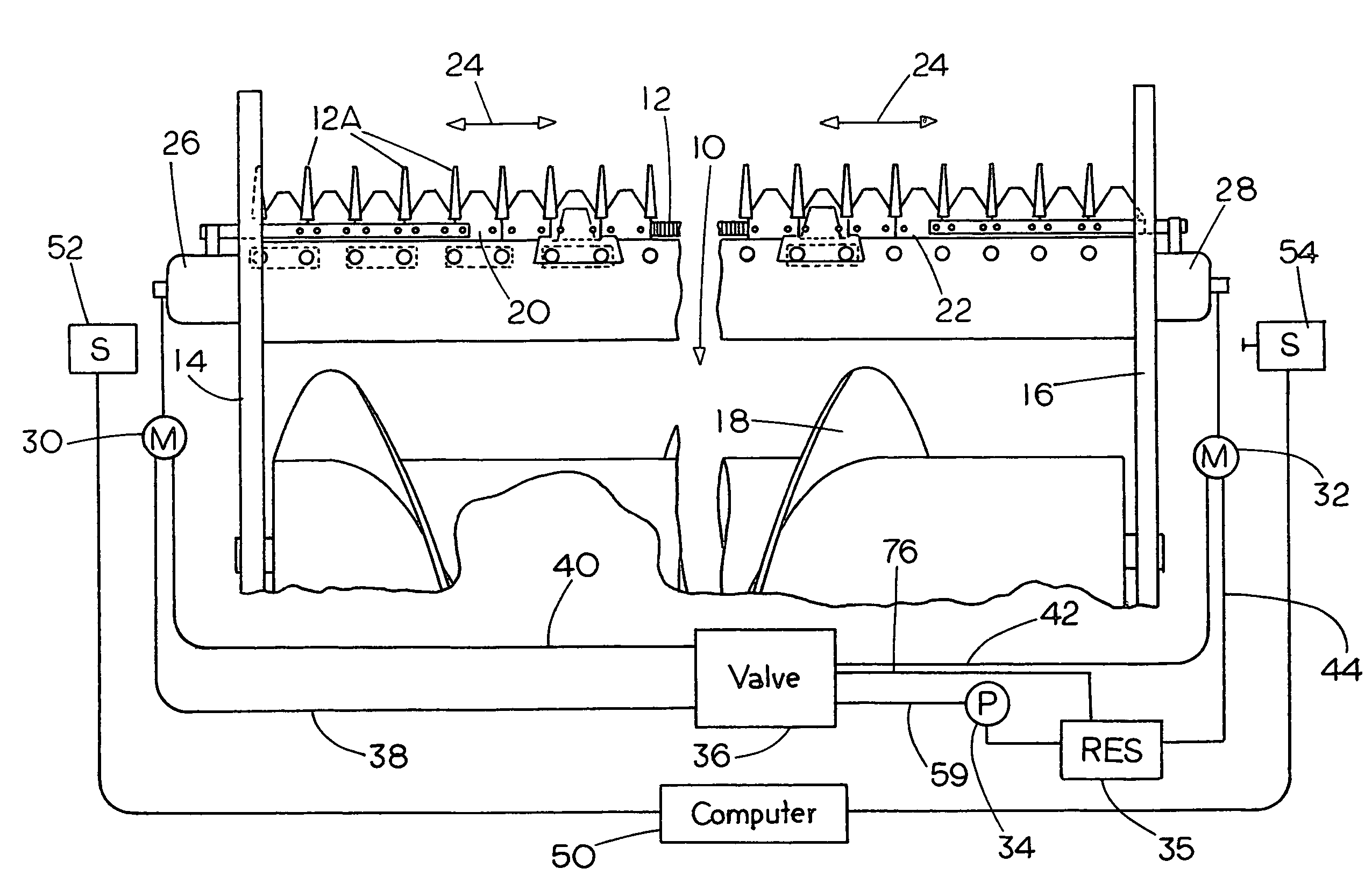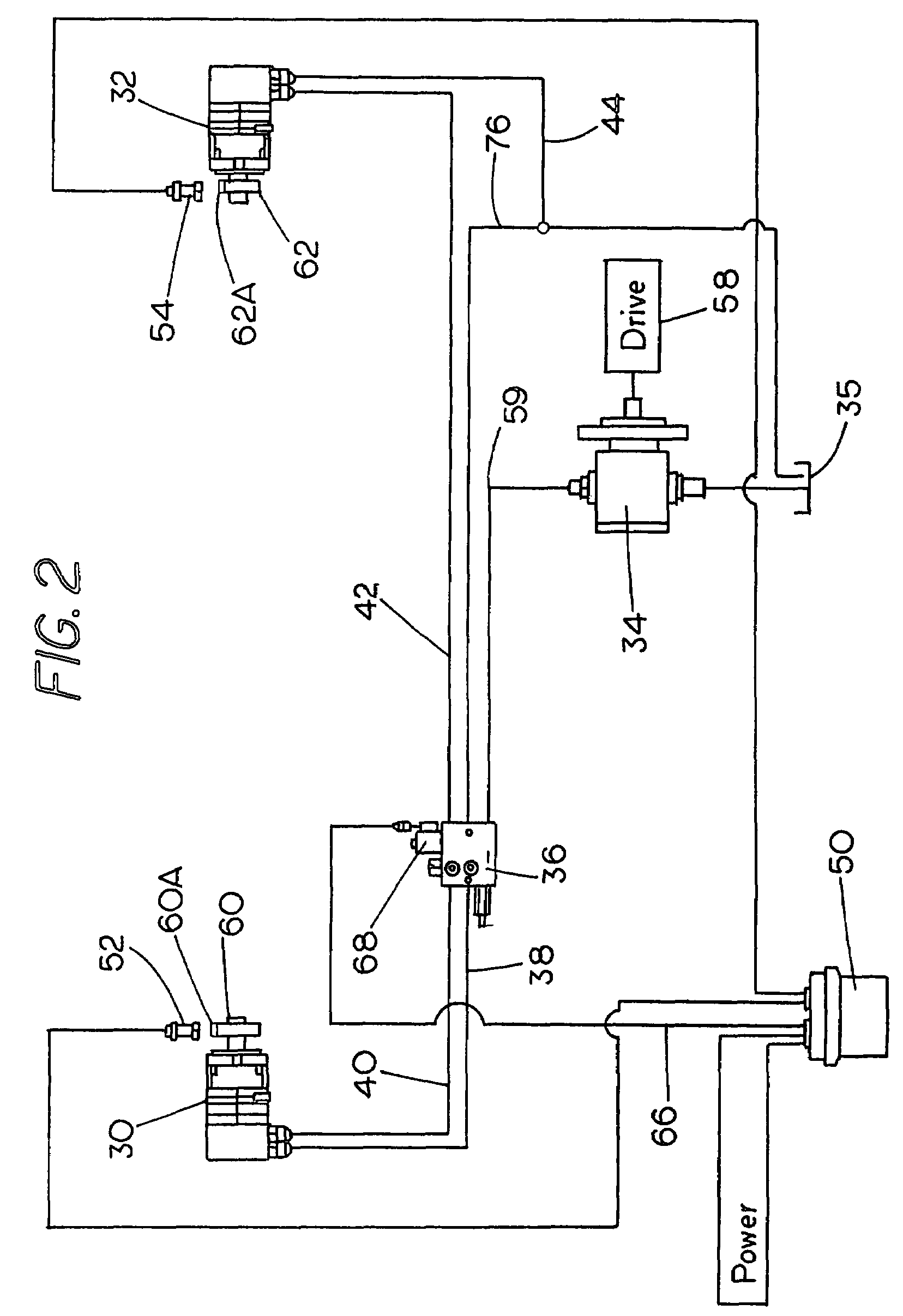Synchronous drive for split sickle bars on harvester header
a harvester and header technology, applied in the direction of mowers, agriculture tools and machines, agriculture, etc., can solve the problems of reducing the life of the machine, and achieve the effect of less vibration, less vibration and wear and tear of the harvester
- Summary
- Abstract
- Description
- Claims
- Application Information
AI Technical Summary
Benefits of technology
Problems solved by technology
Method used
Image
Examples
Embodiment Construction
[0019]Referring first to FIG. 1, a fragmentary portion of a harvester or combine header 10 is schematically shown. The header is shown as a combine header and has a cutter bar assembly 12 at a leading edge thereof, and divider side panels 14 and 16 along the ends of the header. The cutter bar has a main transverse support bar for supporting the sickle sections 20 and 22, and carries sickle guards 12A. The header 10 includes a feed auger 18 that would receive material cut by the pair of sickle bar sections 20 and 22 that are supported on the cutter bar assembly 12, as the harvester header is moved forwardly. The FIG. 1 showing is a schematic showing, but the header length is such that the sickle bar sections 20 and 22 are individual, and will reciprocate back and forth as indicated by the double arrows 24. At the center portions of the header the sickle bar sections will have overlap so that when in synchronization there is a clean cut where the inner ends of the sickle bar sections ...
PUM
 Login to View More
Login to View More Abstract
Description
Claims
Application Information
 Login to View More
Login to View More - R&D
- Intellectual Property
- Life Sciences
- Materials
- Tech Scout
- Unparalleled Data Quality
- Higher Quality Content
- 60% Fewer Hallucinations
Browse by: Latest US Patents, China's latest patents, Technical Efficacy Thesaurus, Application Domain, Technology Topic, Popular Technical Reports.
© 2025 PatSnap. All rights reserved.Legal|Privacy policy|Modern Slavery Act Transparency Statement|Sitemap|About US| Contact US: help@patsnap.com



